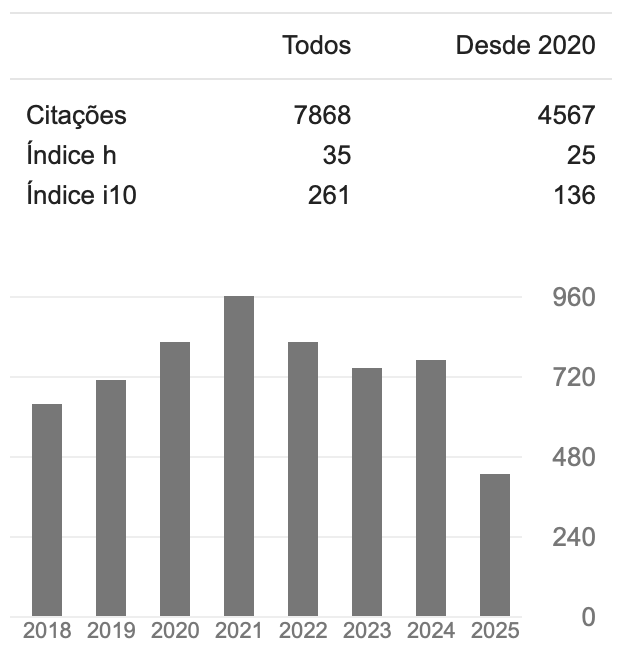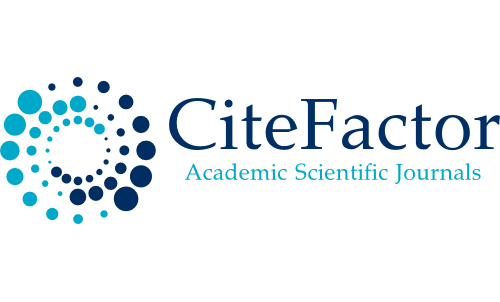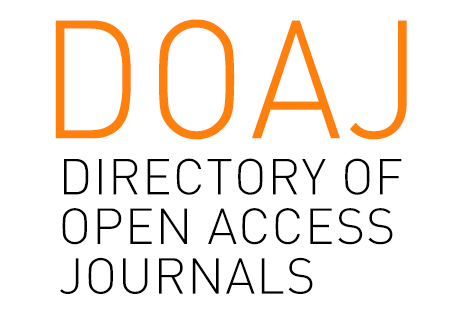Análise de sentimento de redes sociais online: o Twitter e o UFC 202 (Ultimate Fighting Championship)
DOI:
https://doi.org/10.17765/2176-9206.2019v12n2p399-407Palabras clave:
Análise de Sentimento, Rede Social, Esporte, Promoção da SaúdeResumen
A modalidade esportiva MMA e a exibição do evento levam os usuários nas redes sociais on-line a opinarem. Com o objetivo de analisar mensagens postadas na rede social Twitter sobre o UFC 202 a pesquisa analisou discursos por meio da aquisição e tratamento das mensagens divulgadas na rede social usando de uma API e empregando método de análise de sentimento dos tweets utilizando linguagem R. As mensagens apresentaram classificação mais positiva mesmo sendo sobre um dos eventos mais polêmicos do UFC. Conclui-se que os usuários podem emitir mensagens positivas sobre um esporte que socialmente ainda apresenta algumas dificuldades de inserção. Abrem-se perspectivas para que estudos de recepção sejam incorporados para avaliar a percepção dos espectadores frente a um evento esportivo.Descargas
Citas
Gottschalk, Louis A. CGG. The Measurement of Psychological States Through the Content Analysis of Verbal Behavior. Press U of C. Berkeley-CA-USA; 1979. 317 p.
Picard RW. Affective Computing. (321).
Pang B, Lee L. Opinion mining and sentiment analysis. 2008;2(1).
Eagle N, Sandy ÆA. Reality mining : sensing complex social systems. 2006;255–68.
Kouloumpis E, Wilson T, Moore J. Twitter Sentiment Analysis: The Good the Bad and the OMG ! 2011;538–41.
Foucault M. Vigiar e Punir. 27. ed. São Paulo: Vozes; 1987. 288 p.
Velho P, Velho P. Semiaberto na domiciliar monitorada eletronicamente em Rondônia: o panóptico contemporâneo. 2018;9:394–416.
Dias A, Chiavegatto P. Uso de big data em saúde no Brasil: perspectivas para um futuro próximo. 24(2):325–32.
Connor BO, Balasubramanyan R, Routledge BR, Smith NA. From Tweets to Polls: Linking Text Sentiment to Public Opinion Time Series.
Santa BP. ‘É gol na TV ... e no smartphone ?’: um estudo sobre o comportamento do telespectador na segunda tela. 2015;214–28.
Hudson S, Huang L, Roth MS, Madden TJ. ScienceDirect The in fl uence of social media interactions on consumer – brand relationships: A three-country study of brand perceptions and marketing behaviors. Int J Res Mark [Internet]. Elsevier B.V.; 2015; Available from: http://dx.doi.org/10.1016/j.ijresmar.2015.06.004
Armando J, Almeida M De. Identidade e emancipação Identidad y emancipación Identity and emancipation. 2006;(c):1–7.
Realidade DA, Berger PL. A construção social. 2004;
Matterlart A, Matterlart M. História das teorias da comunicação. 9th ed. São Paulo -SP: Edições Loyola; 2006. 220 p.
O’Brien C. The emergence of the social media empowered consumer.
Ferreira V, Filho M. Mídia, mercadorização esportiva e o movimento de popularização do mma. 865–77.
Signorini A, Segre AM, Polgreen PM. The Use of Twitter to Track Levels of Disease Activity and Public Concern in the U . S . during the Influenza A H1N1 Pandemic. 2011;6(5).
Pereira JM, Castells Manuel . Redes de indignação e esperança: movimentos sociais na era da internet. Tradução Carlos Alberto Medeiros. Rio de Janeiro: Zahar; 2013. 271 p. 2015;407–10.
Teixeira D, Azevedo I. Análise de opiniões expressas nas redes sociais. 2011;53–65.
Jose F, Iii G, Hons BHK, Sheps S, Ho K, Novak-lauscher H, et al. Social Media: A Review and Tutorial of Applications in Medicine and Health Care Corresponding Author:16(2).
Eysenbach G. Infodemiology and Infoveillance. AMEPRE [Internet]. Elsevier Inc.; 2011;40(5):S154–8. Available from: http://dx.doi.org/10.1016/j.amepre.2011.02.006
Seeman N, Ing A, Rizo C. Assessing and Responding in Real Time to Online Anti-vaccine Sentiment during a Flu Pandemic. 2010;13(September).
Chew C, Eysenbach G. Pandemics in the Age of Twitter: Content Analysis of Tweets during the 2009 H1N1 Outbreak. 2010;5(11):1–13.
Sakaki T. 03 - Earthquake Shakes Twitter Users: Real-time Event Detection by Social Sensors. 2009;
Giles J. Blogs and tweets could predict the future. New Sci. 2010;206(2765).
Harris JK, Moreland-russell S, Choucair B, Mansour R, Harris JK. Tweeting for and Against Public Health Policy: Response to the Chicago Department of Public Health’ s Electronic Cigarette Twitter Campaign Corresponding Author: 2014;16.
Heaivilin N, Gerbert B, Page JE, Gibbs JL. Public health surveillance of dental pain via Twitter. J Dent Res. 2011;90(9):1047–51.
Biever C. Twitter mood maps reveal emotional states of America. New Sci. 2010;207(2771).
Tumasjan A, Sprenger T, Sandner, PG; Welpe, IM. Predicting Elections with Twitter: What 140 Characters Reveal about Political Sentiment. 2010; 178–85.
Gerbaudo, P. Tweets and the Streets. 2012.
PSC. W. Poder de automação: interferência de bots sociais na política global. ComCiência. 2017;186.
Liu, B. Sentiment Analysis and Opinion Mining. 2012;(May).
Passonneau, R. Sentiment Analysis of Twitter Data. 2011;(June):30–8.
Ohammad, S; Urney, P. Canada C. Croudsourcing a word: emoticon association lexicon. 2013;29(3).
Plutchik, R. A psychoevolutionary theory of emotions. Meet Rep. 1982;21.
Kavussanu, M; Willoughby, A; Ring, C. Moral Identity and Emotion in Athletes. 2012;(May 2014).
Sage L, Kavussanu, M. Moral identity and social goals predict eudaimonia in football Moral identity and social goals predict eudaimonia in football. Psychol Sport Exerc [Internet]. Elsevier Ltd; 2017;11(6):461–6. Available from: http://dx.doi.org/10.1016/j.psychsport.2010.05.008
Proios, M. Development and validation of the Moral Orientation of Students in Physical Education Questionnaire (MOSPEQ) This article was downloaded by : [ HEAL-Link Consortium ] Educational Research and Evaluation Development and validation of the Moral Orientatio. 2014;(June 2010).
Lee MJ, Whitehead J, Ntoumanis N. Relationships Among Values , Achievement Orientations , and Attitudes in Youth Sport. 2008;588–610.
Weiss, MR. Moral development in sport. Exerc Sport Sci Rev. 1990;78(331):78.
Koller SH. Desenvolvimento moral pró-social: Semelhanças e diferenças entre os modelos teóricos de Eisenberg e Kohlberg; 1997.
Descargas
Publicado
Cómo citar
Número
Sección
Licencia
A submissão de originais para a revista Saúde e Pesquisa implica na transferência da Carta Concessão de Direitos Autorais, pelos autores, dos direitos de publicação digital para a revista após serem informados do aceite de publicação.A Secretaria Editorial irá fornecer da um modelo de Carta de Concessão de Direitos Autorais, indicando o cumprimento integral de princípios éticos e legislação específica. Os direitos autorais dos artigos publicados nesta revista são de direito do autor, com direitos da revista sobre a primeira publicação. Os autores somente poderão utilizar os mesmos resultados em outras publicações, indicando claramente a revista Saúde e Pesquisa como o meio da publicação original. Em virtude de tratar-se de um periódico de acesso aberto, é permitido o uso gratuito dos artigos, principalmente em aplicações educacionais e científicas, desde que citada a fonte. A Saúde e Pesquisa adota a licença Creative Commons Attribution 4.0 International.
A revista se reserva o direito de efetuar, nos originais, alterações de ordem normativa, ortográfica e gramatical, com vistas a manter o padrão culto da língua e a credibilidade do veículo. Respeitará, no entanto, o estilo de escrever dos autores. Alterações, correções ou sugestões de ordem conceitual serão encaminhadas aos autores, quando necessário. Nesses casos, os artigos, depois de adequados, deverão ser submetidos a nova apreciação. As opiniões emitidas pelos autores dos artigos são de sua exclusiva responsabilidade.


















